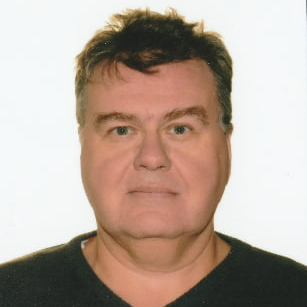Functional Micro Structures and Textures: Manufacturing and Applications
A special issue of Micro (ISSN 2673-8023). This special issue belongs to the section "Microscale Physics".
Deadline for manuscript submissions: 31 October 2024 | Viewed by 377
Special Issue Editor
2. Automotive and Surface Transportation, National Research Council of Canada, London, ON N6G 4X8, Canada
Interests: materials and processing: materials based micro/nano structures, devices, system, and its applications, bio-inspired surfaces; micro/nano fabrication and manufacturing: patterning, surface micromachining, bulk micromachining, laser fabrication, advanced manufacturing engineering
Special Issues, Collections and Topics in MDPI journals
Special Issue Information
Dear Colleagues,
Advanced micro/nano-, cutting/laser-based machining technologies, such as micromachining of complex parts and geometric structures and features; structuring and texturing of functional, optical, and tooling surfaces, are the key technologies for creating new and/or enhancing existing values of functional parts and products. These surface engineering technologies exhibit significant advantages over conventional processes in terms of process reconfigurability, accuracy, precision, surface quality, versatility, processing time and cost, and minimal environmental impact. In addition, nano/micromachining technologies can be seamlessly integrated with novel material additive processes and systems for surface formation and topography enhancement and functionalization.
The aim of this Special Issue is to cover advanced developments, functionalities, and applications in functional microstructures and textures produced using micro/nano-, cutting/laser-based machining technologies. It also seeks to highlight research on system and part design; process and performance modelling; microfabrication; and performance evaluation of the micromachining process and/or functional surfaces and their precision, accuracy, quality, and efficiency improvement for a wide range of applications related (but not limited to) the control of wettability, friction, optical appearance, light guiding, corrosion, hydro- and aero-dynamics, and biofouling resistance.
We invite leading experts and researchers in this field to submit original research papers, comprehensive reviews, and communications addressing any of the topics mentioned below:
- Functional surfaces and micro-/nanostructures for enhanced wettability, friction, hydro-/aerodynamics, light guiding, optical holography, self-cleaning, drag, biofouling resistance, solar light trapping, boiling, water condensation, adhesion, alumophobicity, etc.;
- Functional surfaces and micro-optics for advanced optical performance (e.g., illumination, retroreflection, holography, light guiding, diffraction, sensing, etc.) and controlled visual appearance (e.g., brand recognition, artistic effects, etc.)
- Cutting-based micro/nanomachining including single-point cutting, milling, vibration-assisted cutting, fast/slow tool servo and other advanced technologies for microfabrication, structuring, texturing, polishing, etc.;
- Laser-based micro/nanomachining including ablation, remelting, microcladding, and other advanced technologies for structuring, texturing, polishing, remelting, alloying, etc.
You may choose our Joint Special Issue in Micromachines.
Dr. Evgueni Bordatchev
Guest Editor
Manuscript Submission Information
Manuscripts should be submitted online at www.mdpi.com by registering and logging in to this website. Once you are registered, click here to go to the submission form. Manuscripts can be submitted until the deadline. All submissions that pass pre-check are peer-reviewed. Accepted papers will be published continuously in the journal (as soon as accepted) and will be listed together on the special issue website. Research articles, review articles as well as short communications are invited. For planned papers, a title and short abstract (about 100 words) can be sent to the Editorial Office for announcement on this website.
Submitted manuscripts should not have been published previously, nor be under consideration for publication elsewhere (except conference proceedings papers). All manuscripts are thoroughly refereed through a single-blind peer-review process. A guide for authors and other relevant information for submission of manuscripts is available on the Instructions for Authors page. Micro is an international peer-reviewed open access quarterly journal published by MDPI.
Please visit the Instructions for Authors page before submitting a manuscript. The Article Processing Charge (APC) for publication in this open access journal is 1000 CHF (Swiss Francs). Submitted papers should be well formatted and use good English. Authors may use MDPI's English editing service prior to publication or during author revisions.
Keywords
- functional surfaces
- functional structures
- functional components
- modelling
- numerical simulation
- verification micro/nano-machining
- cutting
- milling
- turning
- single point cutting
- laser ablation
- 3D laser additive
- laser remelting
- process optimization
- CAD/CAM design



